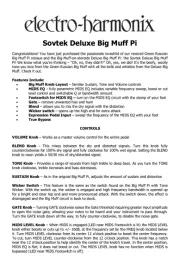Electro Harmonix Enigma: Q Balls Handleiding
Electro Harmonix
Niet gecategoriseerd
Enigma: Q Balls
Bekijk gratis de handleiding van Electro Harmonix Enigma: Q Balls (4 pagina’s), behorend tot de categorie Niet gecategoriseerd. Deze gids werd als nuttig beoordeeld door 86 mensen en kreeg gemiddeld 4.3 sterren uit 43.5 reviews. Heb je een vraag over Electro Harmonix Enigma: Q Balls of wil je andere gebruikers van dit product iets vragen? Stel een vraag
Pagina 1/4

ENIGMA: Q BALLS
FOR BASS
ongratulations on your purchase of the Enigma: Q-Balls envelope
controlled filter for bass! This is a very powerful tool for musical
expression that opens a new horizon of sonic potential for your
bass. Please take a few minutes to familiarize yourself with the
Enigma’s controls and how they work.
Envelope controlled filters are a unique type of sound modifier where the
intensity of the effect is controlled by the user’s playing dynamics. The
volume and dynamic of the incoming audio signal is used to control a swept
filter. As the volume increases or decreases so does the frequency of the
filter.
With 3 selectable filter modes, along with START, STOP, ATTACK, DECAY,
Q SENSITIVITY and controls, all of the classic Q sounds are available to
the user. Also, many new sounds and vivid textures can be achieved like
never before. A new analog distortion circuit was created specifically for the
ENIGMA, and adds a dynamic edge to the filters sound. With the addition of
an expression pedal input (expression pedal not included), the ENIGMA
provides manual control of the filter sweep.
— — POWER
— — CONTROLS
BLEND –Controls the output mix of the dry and eected signal. Fully CCW is
100% dry with no eect added. Fully CW is 100% wet with no remaining dry
signal.
WARNING: -200Bl AC Adapter Use only the US96DC that the
ENIGMA comes supplied with. Do not use any other AC Adapters.
Using other AC adapters, even those made by Electro-Harmonix, could
cause harm to the unit, the adapter or you. The ENIGMA does not use
batteries.

MODE –This is a rotary switch used to select between the 3 lter modes available
on the ENIGMA. Select between LP (low pass), BP (band pass), and HP (high pass)
modes to emphasize a dierent frequency band. Selecting between these modes
does not change the start and stop frequencies.
ATTACK –This knob controls how quickly the lter will sweep from the frequency
set by the “START” knob set by the “STOP”to the frequency knob. Fully CCW
will have the fastest attack setting and is good for quick percussive styles of playing.
Fully CW will have the slowest attack setting and creates a slower smoother sweep
for a bowed sound.
DECAY –This knob controls how sensitive the reset circuit is when falling back
from the “STOP” setting to the “START” setting. Fully CCW will have the most
sensitive reset. In this setting the sweep will reset the fastest and the easiest. Use
this when playing quick staccato notes to make sure every note triggers a new
envelope sweep. Fully CW will maximize the decay setting. Use a longer decay
setting when you don’t want every note to reset.
START –This knob sets the frequency that the sweep starts at. Fully CCW is the
lowest frequency (about 40Hz). Fully CW is the highest setting (about 3Khz). Use
this knob along with the “STOP” knob to set the range and direction of the sweep.
For example, a low “START” and a high “STOP” will sweep upward. A high
“START” and a low “STOP” will sweep downward.
STOP –This knob sets the frequency that the lter sweeps to. Fully CCW is the
lowest setting (about 40Hz). Fully CW is the highest setting (about 3KHz).
Q – This knob controls the resonance of the Q. Fully CCW is the widest bandwidth
and fully CW is the most resonant for a more dramatic eect.
SENSITIVITY –This knob controls the input sensitivity of the envelope lter
circuit. Fully CCW is the least sensitive, and the circuit will be less reactive to the
instrument input. Fully CW is the most sensitive and the circuit will be the most
reactive to the instrument input.
A NOTE ON INTERACTIVE CONTROLS:
The “ATTACK”, “DECAY”, “START”, “STOP” and “SENSITIVITY” knob are
highly interactive. If Attack is set to slow, the Decay is set to fast, or the Sensitivity
is set to low, the lter sweep may not reach the stop frequency. The lowest
frequency sweeps in the ENIGMA can be dicult to hear. If this causes the attack
to sound abrupt, tune the start position so the sweep begins at a more audible
frequency. All of the functions depend heavily on how the Sensitivity. Take some
time to become familiar with these knobs and functions and learn how they work
together to eect dierent styles of playing.

DISTORTION FOOTSWITCH/STATUS LED This footswitch engages the –
analog distortion circuitry in the ENIGMA. When distortion is engaged, the LED
will turn on, and when distortion is disengaged the LED will turn o. The intensity
of the distortion is controlled by the “SENSITIVITY” knob. Inside the pedal there is
a Trim Pot labeled “ ”DISTORTION LEVEL . This can be adjusted by the user to
ne tune the volume of the distortion when engaged. This will not aect the gain or
intensity of the distortion. adjust any other trim pot on the board as they DO NOT
have been carefully calibrated for optimum performance.
EXPRESSION PEDAL INPUT –An optional expression pedal can be used with
the ENIGMA for manual control of the lter. When the pedal is in toe up position,
the frequency will be at the “STA T” position. In the toe down position, the R
frequency will be at the “STOP” position. Use this along with various “Q” knob
setting to get resonant lter sweeps as well as wah-wah sounds with versatile a
range.
BYPASS FOOTSWITCH/STATUS LED The footswitch engages/disengages the –
eect. If the eect is engaged, the LED will light up. When the eect is disengaged,
the LED will turn o, and the pedal will be in true bypass.
INPUT Jack – Connect your instrument’s output to this ¼” mono jack. The input
impedance presented at this jack is 710Kohms
EFFECT OUT Jack –Connect this ¼” mono jack to your amplifier’s input. The
output impedance presented at this jack is ohms. 300
DIRECT OUT Jack –This is a direct out signal from the input. This signal does
not go though any of the eects circuitry.
CAUTION: This pedal was designed to give the user the maximum potential for
user customizability and there are some setting combinations that are extreme. If the
Q setting is maxed, at the peak high and low frequency this pedal can be
INCREDIBLY loud.
- WARRANTY INFORMATION -
Please register online at http://www.ehx.com/product-registration or complete and return the
enclosed warranty card within 10 days of purchase. Electro-Harmonix will repair or replace, at
its discretion, a product that fails to operate due to defects in materials or workmanship for a
period of one year from date of purchase. This applies only to original purchasers who have
bought their product from an authorized Electro-Harmonix retailer. Repaired or replaced units
will then be warranted for the unexpired portion of the original warranty term.
If you should need to return your unit for service within the warranty period, please contact
the appropriate oce listed below. Customers outside the regions listed below, please contact
EHX Customer Service for information on warranty repairs at info@ehx.com or +1-718-937-
8300. USA and Canadian customers: please obtain a (RA#) Return Authorization Number
Product specificaties
| Merk: | Electro Harmonix |
| Categorie: | Niet gecategoriseerd |
| Model: | Enigma: Q Balls |
Heb je hulp nodig?
Als je hulp nodig hebt met Electro Harmonix Enigma: Q Balls stel dan hieronder een vraag en andere gebruikers zullen je antwoorden
Handleiding Niet gecategoriseerd Electro Harmonix
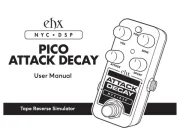
15 Mei 2025

2 April 2025

1 April 2025

4 December 2024

16 November 2024

16 November 2024

16 November 2024

16 November 2024

12 November 2024
Handleiding Niet gecategoriseerd
- BabyDan
- Gator Frameworks
- Vision
- SpyTec
- Heitronic
- Sunset
- Lampa
- Freedor
- KMP
- Dunlop
- Cambium Networks
- Foxconn
- Klein Tools
- Aigital
- Röhm
Nieuwste handleidingen voor Niet gecategoriseerd
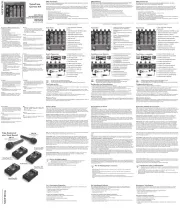
2 Augustus 2025
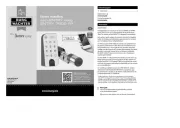
2 Augustus 2025
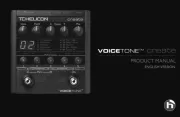
2 Augustus 2025
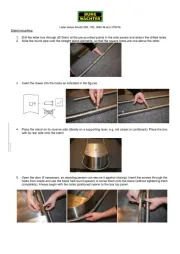
2 Augustus 2025
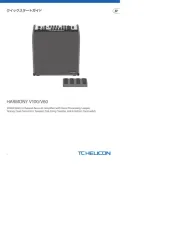
2 Augustus 2025
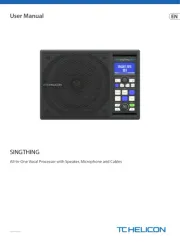
2 Augustus 2025
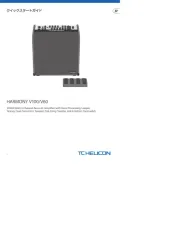
2 Augustus 2025
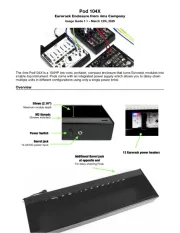
2 Augustus 2025
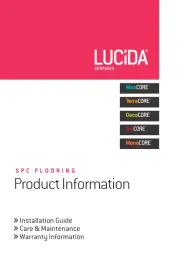
2 Augustus 2025
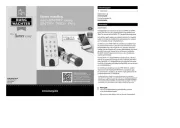
2 Augustus 2025
